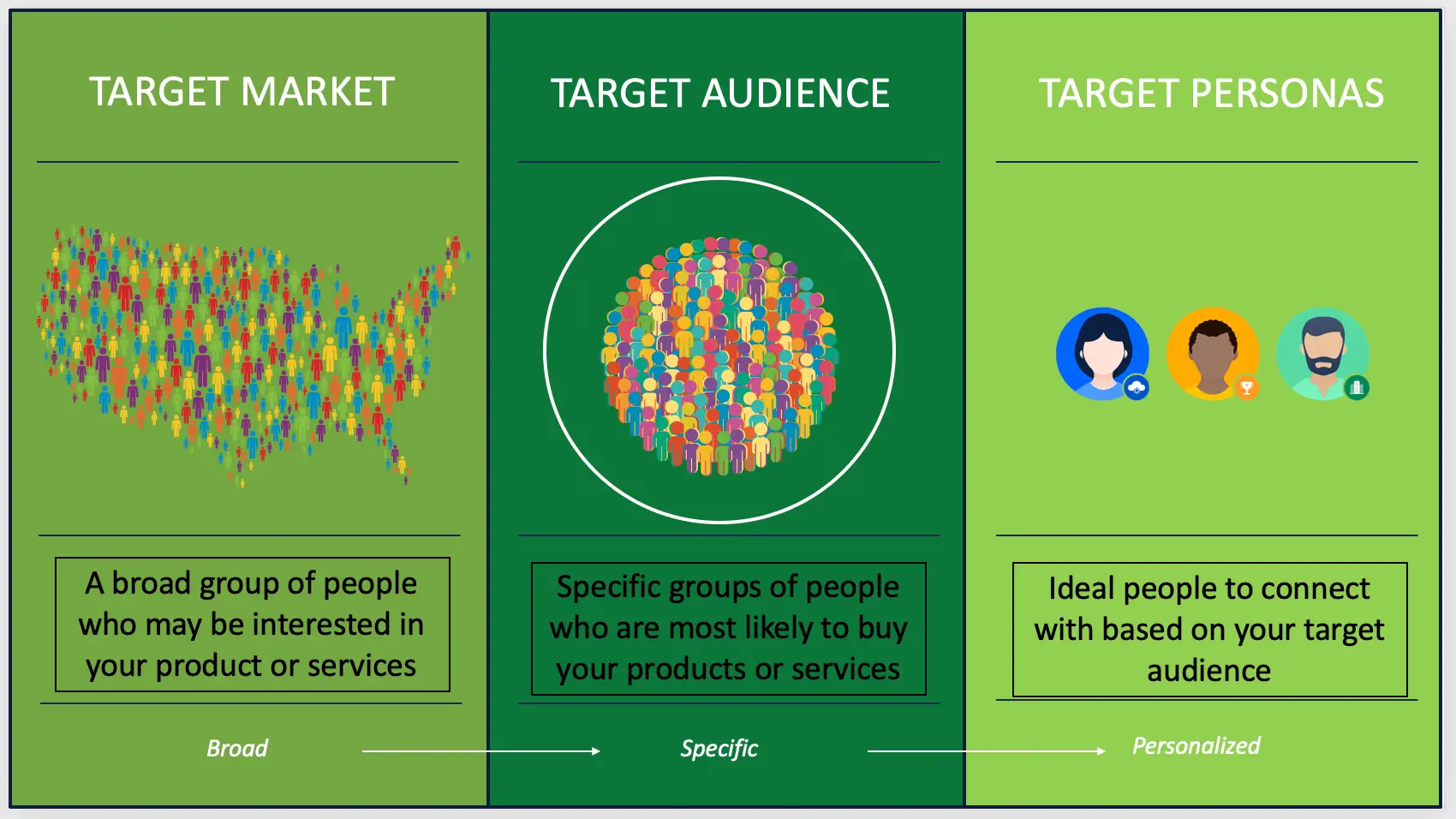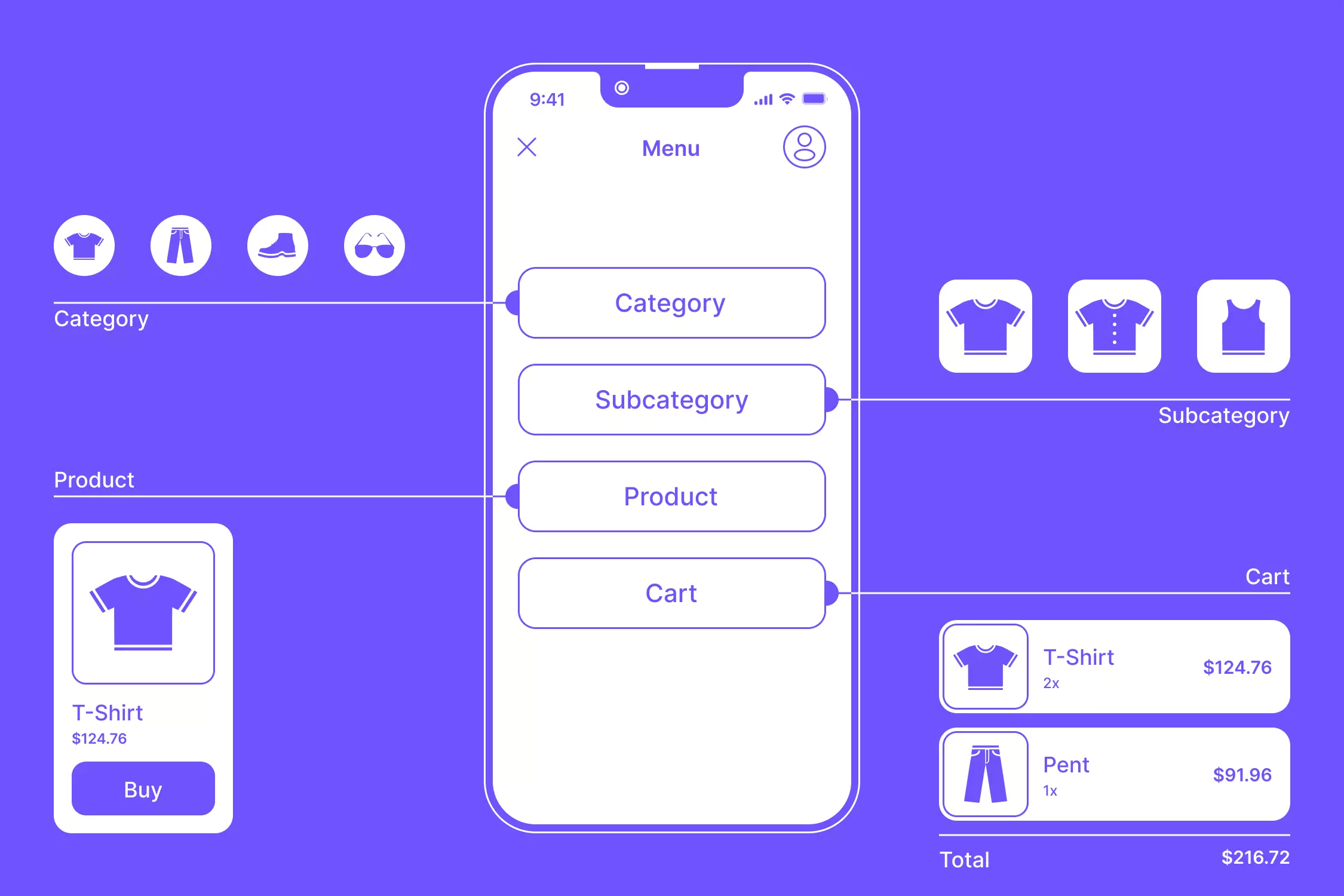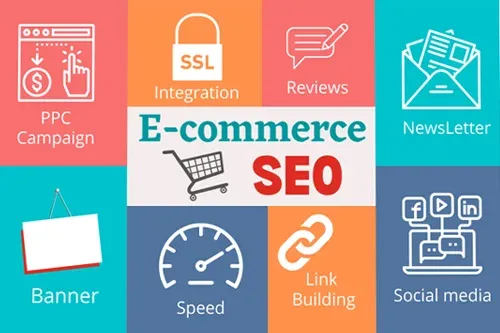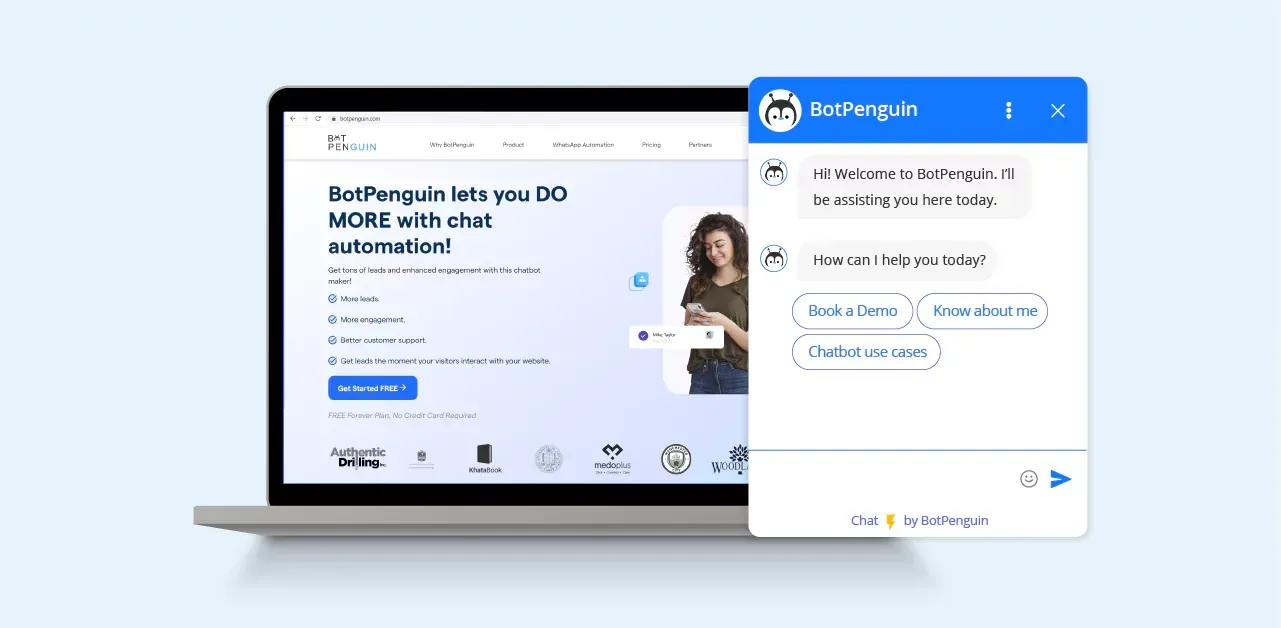Understand your shoppers inside and out. Who are they? What do they like? What makes them click on an ad banner? Get into their heads so you can solve their problems.
Pay attention to your bestsellers - those products hold clues to your customers' desires. And don't forget to ask for feedback directly, too.
Choose the right website platform wisely. It's your virtual storefront, so pick one with all the right tools. Make sure your site works seamlessly on phones since that's how most people shop nowadays. Design is also key - develop a cohesive brand look to attract new customers.
Keep reading to discover the rest of the secrets they don't want you to know about social media marketing, email promotions, product pages, and more!
By following these insider tips, you'll be well on your way to online retail success. Your customers are waiting - are you ready to serve them?
So, let us start exploring the best e-commerce marketing strategies in 2024.
Understanding Your Audience

To optimize your online store and marketing, you must start by understanding your target customers.
Take the time to research demographics like age, gender, location, and interests of your ideal customer.
Learn what problems your products or services can solve for them.
Consider surveying your current customers to gather valuable insights into how they discovered your business, what they searched for online, and what ultimately motivated them to purchase.
This information will help you create more targeted and effective marketing campaigns.
The next step will be choosing the right E-commerce marketing platform.
Choosing the Right E-commerce Marketing Platform
Selecting the right E-commerce Marketing platform is the main decision that can significantly impact the success of your online store.
Your chosen platform should align with your business goals, budget, and technical capabilities.
Here are some factors to consider when evaluating e-commerce marketing platforms:
- Scalability and Flexibility
As your business grows, it's essential to have an e-commerce marketing platform that can scale with your needs.
- Learning from Customers
Look for platforms that offer flexible pricing plans, accommodate increased website traffic, and provide features to support future expansions.
- User-Friendly Interface
A user-friendly interface is crucial for both you and your customers.
Look for platforms that offer intuitive and easy-to-use dashboards, simple product management systems, and efficient checkout processes. A user-friendly interface will enhance the overall customer experience and reduce cart abandonment.
- SEO-Friendly Features
Search engine optimization (SEO) drives organic traffic to your online store.
Choose an e-commerce platform with built-in SEO features, such as customizable URL structures, meta tags, and sitemaps. These features will help improve your store's visibility in search engine results.
- Payment and Security Options
A reliable and secure payment system is essential for building customer trust. Look for platforms that offer a wide range of payment options and integrated security features.
This will ensure that your customer's sensitive information is protected and they feel confident when purchasing.
After choosing the e-commerce Marketing platform, the next step will be designing.
Design and User Experience

Design and user experience are critical to creating a compelling online store. Your website's design should reflect your brand identity, be visually appealing, and provide an intuitive user experience.
Here are some of the best e-commerce marketing strategies for design and user experience:
Brand Identity
Your website's design should reflect your brand identity, including your logo, color scheme, and overall aesthetic.
Ensure all design elements are consistent across your website, including product, category, and home pages. This is the first and most important thing to consider for e-commerce marketing strategy 2024.
Visual Appeal
Visual appeal is vital for creating a positive first impression and engaging customers.
Use high-quality product images and videos to showcase your products and optimize them for faster load times. Incorporate visually appealing design elements like clear typography, white space, and easy-to-read fonts.
Intuitive User Experience
An intuitive user experience is essential for keeping customers engaged and reducing cart abandonment.
Use clear navigation, simple checkout processes, chatbot automation, and make your website mobile-responsive.
Chatbot automation can provide 24/7 customer support to improve the user experience and increase sales.
Chatbots answer common questions instantly, freeing live agents to handle more complex issues. This creates a seamless experience for customers and improves their overall satisfaction.
An intuitive user experience will improve customer satisfaction and increase the likelihood of repeat purchases.
Now, let’s move on to learn about the SEO for e-commerce stores.
Suggested Reading:
SEO for E-commerce Marketing Stores

Search engine optimization (SEO) plays a crucial role in improving the visibility and search rankings of your e-commerce store.
Implementing on-page SEO strategies can enhance your website's performance, attract organic traffic, and increase conversions.
In this section, we will discuss some effective SEO tips to optimize your e-commerce marketing store and improve its online presence.
On-Page SEO Strategy for E-commerce Stores
One of the primary areas to focus on for e-commerce SEO is optimizing your product pages. Here are some SEO tips for e-commerce marketing strategy 2024:
- Meta Titles and Descriptions: Create unique and enticing meta titles and descriptions for each product page. Include relevant keywords and accurately describe the product to attract search engine users.
- Product Page Titles and Descriptions: Craft compelling and informative titles and descriptions for your products. Use targeted keywords naturally and highlight the unique selling points of each item.
- Images Optimization: Optimize your product images by compressing them without sacrificing quality. Use descriptive file names and alt tags to provide search engines with additional context about your products.
Improving Website Speed
Website speed is crucial for user experience and search engine rankings, making it an essential element of eCommerce marketing strategy 2024. Here are some steps to improve your website's speed:
- Optimize Image Sizes: Compress your product images and use formats that provide high-quality visuals while maintaining smaller file sizes. This will help your pages load faster.
- Minimize Code: Remove unnecessary or redundant code from your website's HTML, CSS, and JavaScript files. Compressed and cleaner code can significantly improve load times.
- Utilize Caching: Implement caching mechanisms on your website to store static content and reduce server load. This can greatly improve the speed at which your website loads for returning visitors.
Using Targeted Keywords
Keywords are the foundation of SEO. When optimizing your e-commerce store, use relevant and targeted keywords throughout your website. Here are some keyword-targeting techniques:
- Keyword Research: Conduct thorough keyword research to identify the terms your target audience uses to search for similar products. Use keyword research tools to find the most suitable and popular keywords for your e-commerce niche.
- Strategic Keyword Placement: Incorporate keywords naturally within your product descriptions, category names, URLs, and meta tags. However, avoid keyword stuffing, which can negatively impact your search rankings.
The next step will be using social media for e-commerce marketing.
Suggested Reading:
Social Media for E-commerce Marketing
Social media platforms have billions of active users, providing a vast audience for e-commerce businesses to tap into.
Here are some key reasons why social media is essential for your online store:
- Increased Brand Awareness: Social media allows you to reach many potential customers and promote your brand. By consistently sharing engaging content, you can expand your brand's visibility and establish a strong online presence.
- Audience Engagement: Social media provides a direct channel for interacting with your audience. You can answer their queries, respond to their comments, and build meaningful relationships that foster loyalty and trust.
- Driving Traffic to Your Website: By sharing your product listings, blog posts, or promotional campaigns on social media, you can attract relevant traffic to your e-commerce website. This traffic can be converted into leads and sales, boosting your revenue.
- Chatbot Automation for Social Sites: Using a chatbot on social media allows you to provide automated customer support, marketing, lead generation, and engagement. A chatbot can also interact with audiences through comments and messages, improving the customer experience on social media sites like Facebook, Telegram, and WhatsApp.
And taking your first step towards chatbot automation isn't that tough. Meet BotPenguin- the home of chatbot solutions. With all the heavy work of chatbot development already done for you, deploy chatbots for multiple platforms and make multi-channel support look easy for business:

Choosing the Right Social Media Platforms
With numerous social media platforms available, choosing the ones that align with your target audience and business goals is essential.
Here are some factors to consider when selecting social media platforms for your e-commerce store:
- Demographics: Research the demographics of different social media platforms and identify which ones attract your target audience. For example, Instagram may be more suitable for fashion and lifestyle products, while LinkedIn is effective for B2B e-commerce businesses.
- Platform Focus: Understand the unique features and strengths of each platform. Facebook offers a wide audience reach, while Pinterest is known for its visual appeal and product discovery. Choose platforms that complement your product offerings and marketing strategy.
Creating Engaging Social Media Content
To leverage the power of social media for your e-commerce store, you need to create compelling and shareable content. Here are some tips to make your social media content engaging:
- Visual Appeal: Use high-quality images or videos that grab attention and showcase your products effectively. Invest in professional photography or employ graphic design tools to create visually appealing content.
- Variety of Content: Experiment with different types of content to keep your audience engaged. This could include product videos, customer testimonials, behind-the-scenes footage, or informative blog posts.
Running Social Media Ads
Social media advertising can significantly enhance your e-commerce marketing efforts. It allows you to target specific demographics and reach a wider audience. Here are some key tips for running successful social media ads:
- Targeted Audience: Define your target audience based on demographics, interests, and behaviors. Utilize the targeting options on social media platforms to reach users who are most likely interested in your products.
- Compelling Ad Copy: Write concise and persuasive ad copy that highlights the key benefits of your products. Use clear calls to action (CTAs) to encourage users to click on your ad and visit your e-commerce store.
Now let us see the role of emails for eCommerce Marketing.
Email Marketing for E-commerce

Email marketing lets you directly communicate with your customers and potential buyers, providing personalized and targeted messages that can drive engagement and conversions.
Here are the key benefits of utilizing email marketing for your online store:
- Segmented and Targeted Campaigns: With email marketing, you can segment your audience based on their preferences, demographics, or purchase history. This enables you to send targeted campaigns that resonate with specific customer segments.
- Types of Email Campaigns: There are various types of email campaigns that you can use to engage your audience. These include promotional emails to highlight discounts or special offers, newsletters to provide updates and valuable content, and abandoned cart emails to recover lost sales.
Growing Your Email List
Building a robust email list is essential for the success of your eCommerce email marketing campaigns. Here are some effective strategies to grow your email list:
- Website Pop-ups and Forms: Utilize pop-ups or forms on your website to capture visitor email addresses. Offer incentives such as discounts or freebies to encourage sign-ups.
- Opt-in at Checkout: Include an opt-in checkbox during the checkout process, allowing customers to subscribe to your newsletter or promotional emails.
- Social Media Promotion: Promote your email newsletter on social media platforms, encouraging your followers to sign up and receive exclusive content or offers.
- Lead Generation Chatbots: Chatbots can be absolute game changers for generating leads. You can create chat flows to capture contact and demographic information from users and directly send the data to your CRM software through integration.
Tips for Creating Effective Email Campaigns
To ensure your email campaigns deliver the desired results, here are some tips to remember:
- Compelling Subject Lines: Craft attention-grabbing subject lines that entice recipients to open your email. Keep them concise and personalized whenever possible.
- Personalization and Segmentation: Tailor your email content based on recipient characteristics or behavior. Personalization can improve engagement, while segmentation ensures relevance.
- Clear Call to Action: Communicate the desired action you want recipients to take. Whether it's making a purchase, visiting your website, or downloading a resource, make it easy for them to take that next step.
- Mobile Optimization: The majority of emails are opened on mobile devices. Ensure your email templates are mobile-friendly and display well across different devices and email clients.
Conclusion
Implementing the right e-commerce marketing strategies is key to success as an online retailer.
Start by understanding your target audience and their needs. Choose a flexible platform that can grow with your business.
Design an intuitive site with a strong brand identity across all devices. Optimize product pages through on-page SEO, such as titles, descriptions, and images, to boost search rankings.
Improve speed through image compression and code optimization for a better user experience.
Chatbots will also be potent tools for customer support, engagement, lead generation, and eCommerce marketing automation.
On top of that, use the social media platforms your customers use most through engaging content, chatbots, and targeted ads.
Nurture email subscribers with segmented campaigns highlighting new products and special offers.
By following these best practices, you'll connect with more potential buyers and increase sales.
Your customers are waiting - are you ready to serve them effectively online through optimized marketing?
Suggested Reading:
Frequently Asked Questions (FAQs)
What is the best e-commerce marketing strategy?
The best marketing strategy for e-commerce involves a blend of SEO optimization, social media engagement, targeted email campaigns, and personalized customer experiences. It's essential to prioritize customer engagement and retention alongside acquiring new customers for sustainable growth.
What are the 4 P's of marketing in e-commerce?
The 4 Ps of marketing in e-commerce are product, price, place, and promotion. It refers to the key elements businesses must consider to successfully market and sell their products online, including product selection, pricing strategy, distribution channels, and promotional activities.
What are the four basics of e-commerce?
E-commerce basics of e-commerce include an appealing product range, a user-friendly website, secure payment gateways, and effective marketing strategies. Ensuring these basics are in place allows businesses to establish a strong online presence, attract customers, and create a seamless shopping experience, fostering growth and profitability.
How do you create a compelling product description for e-commerce?
To create a compelling product description for e-commerce, highlight the product's unique features, benefits, and value propositions. Use persuasive language, incorporate SEO keywords, provide accurate product information, and include high-quality images to engage potential customers and drive conversions.



